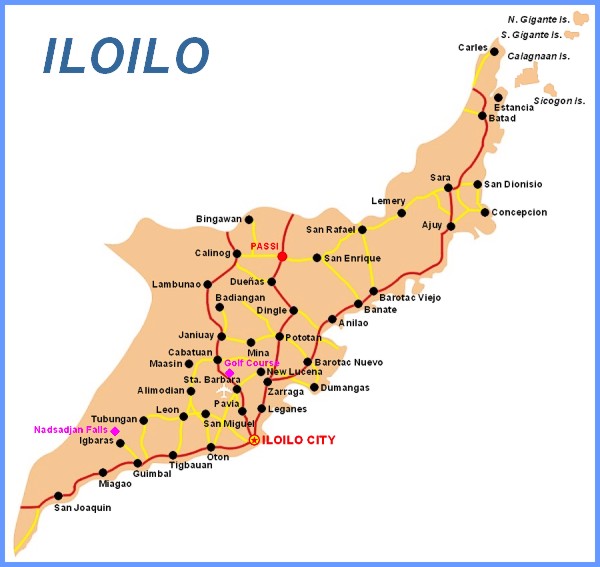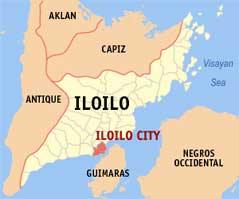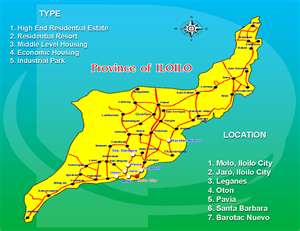
-
МјРЇСІИёСЖШИМі
-
 И№ОЫ КИОЫ Йъ ЗЛЦЎЧЯБт~ ИЎСЖЦЎ ПЙОрБюСі
И№ОЫ КИОЫ Йъ ЗЛЦЎЧЯБт~ ИЎСЖЦЎ ПЙОрБюСі 88,205
88,205 -
 [ЧЪИЎЧЩ ММКЮ] ФЋИ№ХзНК ПЉЧр 100Йш СёБтБт
[ЧЪИЎЧЩ ММКЮ] ФЋИ№ХзНК ПЉЧр 100Йш СёБтБт 38,681
38,681 -
 ИЖДвЖѓ НУГЛ - ИЎРп АјПјСЄКИ. (ЛчСј 16Рх ЦїЧд)
ИЖДвЖѓ НУГЛ - ИЎРп АјПјСЄКИ. (ЛчСј 16Рх ЦїЧд) 30,144
30,144 -
 ММКЮРЧ СіПЊСЄКИ15,141
ММКЮРЧ СіПЊСЄКИ15,141 -
 ИЖДвЖѓ БйБГ - ЕћАЁРЬЕћРЬ ПЉЧр СЄКИ13,668
ИЖДвЖѓ БйБГ - ЕћАЁРЬЕћРЬ ПЉЧр СЄКИ13,668 -
 [ЧЪИЎЧЩ ММКЮ/ИЗХК] ШЃХк МїЙк ПфБн Йз СЄКИ12,676
[ЧЪИЎЧЩ ММКЮ/ИЗХК] ШЃХк МїЙк ПфБн Йз СЄКИ12,676 -
 КИЖѓФЋРЬРЧ И№Еч И№НРРЛ КММі РжДТ ЛчСјУИ.12,556
КИЖѓФЋРЬРЧ И№Еч И№НРРЛ КММі РжДТ ЛчСјУИ.12,556 -
 ИЖДвЖѓ БйБГ - ЦХЛѓЧб ЦјЦї ПЉЧрСЄКИ12,108
ИЖДвЖѓ БйБГ - ЦХЛѓЧб ЦјЦї ПЉЧрСЄКИ12,108 -
 [ММКЮ-ЙшМБТјРх] МБЙкШИЛч РќШЙјШЃПЁПф~11,678
[ММКЮ-ЙшМБТјРх] МБЙкШИЛч РќШЙјШЃПЁПф~11,678 -
 ИЖДвЖѓ СіПЊ(ПЁИЃЙЬХИ -ИЛЖѓХз)РЧ СіЕЕ/ЧбБЙ РННФСЁ/МюЧЮИє11,570
ИЖДвЖѓ СіПЊ(ПЁИЃЙЬХИ -ИЛЖѓХз)РЧ СіЕЕ/ЧбБЙ РННФСЁ/МюЧЮИє11,570
Iloilo Map



The City of Iloilo (Filipino: Lungsod ng Iloilo, Hiligaynon: Syudad sang Iloilo or Dakbanwa sang Iloilo) is a major city and highly urbanized city in the Philippines and the capital city of Iloilo. It is the regional center of the Western Visayas as well as the center of the Iloilo-Guimaras Metropolitan Area. Popularly known as the "City of Love", it takes pride for its Dinagyang Festival which have earned national and international recognition. Lapaz batchoy and Pancit Molo is originated from Iloilo City. Mang Inasal, a famous chicken fastfood chain in the country made its first branch in Iloilo City. The Iloilo River Esplanade which was opened last August, is becoming a tourist attraction the city. The Museo Iloilo, one of the largest museums in the country, is an excellent showcase of Ilonngo history.In the 2007 census, Iloilo City had a population of 418,710 with a 1.8% population annual growth rate. It is bordered by the towns of Oton in the west, Pavia in the north, Leganes in the northeast and the Iloilo Strait in its eastern and southern coastline. The city was a conglomeration of former towns, which are now the geographical districts, composing of: Jaro, Molo, La Paz, Mandurriao, Villa Arevalo, and Iloilo City Proper. The district of Lapuz, a former part of La Paz, was declared a separate district in 2008.
The history of Iloilo City dates back to the Spanish colonial period, starting out as a small and incoherent grouping of fishermen's hamlets from the Iloilo River by a large swamp which after 1855 became the second most important port of call in the colony due to transhipment of sugar products from the neighboring Negros Island. It was later given the honorific title of "La Muy Noble Ciudad" (English: The Most Noble City) by the Queen Regent of Spain . At the turn of the 20th century, Iloilo City was second to the primate city of Manila, with stores along Calle Real selling luxury products from all over the world, an agricultural experimental station established at La Paz in 1888, a school of Arts and Trades which opened in 1891, and a telephone network system operating in 1894.
History
Even before the Spanish colonizers came, Iloilo had a flourishing economy. Lore has it that in the 13th century, ten Bornean datus came to the island of Panay and gave a gold hat (salakot) and a long golden necklace as a peace offering and to the Ati natives of the island. It was said that it was also a way of the ten Bornean datus to barter the flat lands of Panay from the Ati. One datu, named Paiburong, was given the territory of Irong-Irong.
Language
Hiligaynon is the language spoken in Iloilo City. English is used as the language of business and education. In addition, Tagalog and other local dialects such as Karay-a (also known as Kinaray-a) are also spoken. Spanish is still spoken by the elderly and some wealthy families and also the elder members of the micro-community of sugar-plantations related families. The Spanish language was the official language of Iloilo since the colonial period and it was removed in the 70's, But it is still been spoken. Hiligaynon is part of the Austronesian language branch spoken in Western Visayas, It was heavily influence and based on the Spanish language and it's orthography. The Austronesian languages are a family of languages widely dispersed throughout the islands of Southeast Asia and the Pacific, with a few members on continental Asia. Hiligaynon is concentrated in the provinces of Iloilo and Negros Occidental.
The language is referred to as "Ilonggo" or "Ilongo/Ylongo" in Iloilo and in Negros Occidental. More precisely, "Ilonggo" is an ethno-linguistic group referring to the inhabitants of Iloilo and the culture associated with native Hiligaynon speakers. The distinction between the terms, Ilonggo and Hiligaynon, is unclear.
Iloilo City's urban planning and architecture reflect the plans of the Spanish colonial and the American colonial administrations. Since Iloilo City is a conglomeration of towns, the districts have their own plaza complexes or town squares which are surrounded by establishments of political and ecclesiastical influence, such as churches and old administrative halls. In 1930, Juan M. Arellano of the Bureau of Public Works designed the schematic plan for Iloilo City, which was influenced by Ebenezer Howard's "Garden City."
Historical sites
- Molo Church
- A Gothic renaissance church made of coral rock, located three kilometers from the City proper. It was completed in 19th century. The church, which is also referred to as the "Church of Women" because of the statues of women saints that decorate its pillars, was visited by Jose Rizal on hi way to exile in Dapitan, Mindanao.
- Jaro Cathedral
- The seat of Jaro Archbishopric (comprising the Metropolitan Ecclesiastical Province of Western Visayas). The Cathedral, which is dedicated to St. Elizabeth of Hungary, is famous for its Shrine of Our Lady of Candles which, according to pious tradition has been miraculously growing. The devotees of the Blessed Virgen, who invoke her under this title of "Nuestra Senora de la Candelaria" come in thousands during her feast day, 2 February. The image was canonically crowned by His Holiness Pope John Paul II, during the Roman Ponriff's visit to Jaro in 1981. Until the present, the miraculous image is the only sacred icon in the Philippines ever crowned personally by a Pope.
- Jaro Belfry
- One of the few belfries in country that stands apart from the church. It was constructed by the Spaniards to serve also as a watchtower to monitor Muslim invasion from Mindanao. The colonial structure was ruined by an earthquake in 1948, but was restored decades later, in the mid-1990s.
- St. Vincent Ferrer Seminary
- The first institution of higher education in Western Visayas. Following the Papal Bull of Pope Pius IX, dated 27 May 1865, the Dominican Bishop Mariano Cuartero, O.P., the first Bishop of Jaro, laid the foundation of this seminary in 1869, in honor of St. Vincent Ferrer.
- University of San Agustin
- An institution of Catholic Higher Education founded on July 15, 1904 by Spanish Augustinian friars belonging to the Province of the Most Holy Name of Jesus of the Philippines and their American confreres from the Augustinian U.S. Province of St. Thomas of Villanova. Elevated as a University on 1 March 1953, the University of San Agustin holds the title as the "First University in Western Visayas".
- Central Philippine University
- The first Protestant higher education institution in Iloilo, which was founded by the Baptist missionary, Rev. William Orison Valentine. It was founded in 1905 as an elementary school for poor boys which eventually opened up a high school in 1920. It converted into a college in 1923 and attained university status in 1953. The university has the distinction as the first Baptist University in Asia and in the Philippines.
- Villa Lizares/Angelicum School Iloilo
- The imposing building, which was once the mansion and villa of the Lizares Family. It is one of the most beautiful mansions in Iloilo. The Lizares mansion was sold to the Dominican Order of the Philippines in the late 1970s, and is now the seat of Angelicum School Iloilo- a private, Catholic school run by the Order of the Preachers (Dominicans), who made the school a pioneer in a non-graded, open-classroom education system in the Philippines. The Angelicum is the most popular landmark visited by local folks every Christmas because of the fabulous display of Christmas lights that decorate each inch of the Lizares Mansion – its oldest building set within a sweeping lawn of green grass – the main feature of the panoramic view of the school.
- Distrito Jaro
- The old section of the City boasts of the mansions and Hispano-Filipino houses of the sugar barons and elite families during the Spanish regime. It is also seat of Catholicism in Western Visayas.
- Archbishop's Palace
- (Spanish: Palacio del Arzobispo) The residence of the Archbishop of Jaro. It is located southwest of the Jaro Cathedral and southeast of the Jaro Plaza.
- Calle Real (Downtown Iloilo City Heritage District)
- Old buildings that were constructed in the Commonwealth era in J.M Basa (Calle Real), Iznart, Aldeguer and Guanco were declared as a heritage site of Iloilo. It showcases the unique architecture of the downtown area.
- Museo Iloilo
- Repository of Iloilo's cultural heritage.
- Muelle Loney
- The River Port of Iloilo named after British Consul Nicholas Loney, who is considered the father of sugar industry in Panay and Negros. Protected by the Island of Guimaras from typhoons, Muelle Loney is one of the safest harbours in the Country. It was opened to international market in 1855.
- Arroyo Fountain
- The regional kilometer zero point.
- Jaro Evangelical Church,
- The first Baptist Church in the Philippine Islands established by the Northern Baptists (now American Baptist Churches).
- La Villa Rica de Arevalo
- 6 kilometers southwest of city proper; 2nd capital of the Alcaldia of Panay; flower and firecracker district of Iloilo City. This is also home to the 3rd oldest image of the Sto. Nino in the Philippines. Also found in the plaza is the replica of the crown given by the Spanish Queen Isabela in 1896.
- ЁЄ
- ЁЄ
- ЁЄ
- ЁЄ
- ЁЄ
- ЁЄ
- ЁЄ
- ЁЄ
- ЁЄ
- ЁЄNmjNUuzXqd
- ЁЄNmjNUuzXqd
- ЁЄNmjNUuzXqd
- ЁЄNmjNUuzXqd
- ЁЄNmjNUuzXqd
- ЁЄNmjNUuzXqd















 ЧЪРкДхФФ ОпАЃЛѓДу ПРЧТ
ЧЪРкДхФФ ОпАЃЛѓДу ПРЧТ 11ГтПЌМг МвКёРкИИСЗ 1РЇ
11ГтПЌМг МвКёРкИИСЗ 1РЇ
 ГЛАд ИТДТ ОюЧаПј УЃБт
ГЛАд ИТДТ ОюЧаПј УЃБт
 ИЎОѓ ЧаБГ ЙцЙЎБт
ИЎОѓ ЧаБГ ЙцЙЎБт
 СжИЛПЁ ГЛАЁ ОЕ КёПыРК?
СжИЛПЁ ГЛАЁ ОЕ КёПыРК? УжАэАЁМККё РЬКЅЦЎ СёБтБт
УжАэАЁМККё РЬКЅЦЎ СёБтБт
 ЧіСіПЁМЕЕ ЧЪРкДхФФ!
ЧіСіПЁМЕЕ ЧЪРкДхФФ! ЧіСіПЁМ АЁДЩЧб
ЧіСіПЁМ АЁДЩЧб









 ЧЪРк ЦЏБо Ч§ХУ! ФСНУОюСі МКёНК
ЧЪРк ЦЏБо Ч§ХУ! ФСНУОюСі МКёНК



 АЁСЗПЌМіЗЮ ДйЧдАд ОзЦМКёЦМ
АЁСЗПЌМіЗЮ ДйЧдАд ОзЦМКёЦМ




























